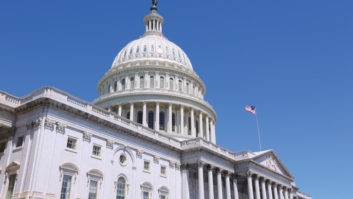As the quadrennial media ownership review proceeding begins to move forward, the time has come to modernize radio ownership rules, said the National Association of Broadcasters.
In a letter to the Federal Communications Commission sent on June 15, the NAB pressed the FCC to determine if it is in the public interest to retain today’s current broadcast ownership rules.
The NAB said existing radio ownership limits are not needed to promote competition in today’s audio marketplace. In fact, the current rules impede terrestrial radio stations’ ability to compete and serve their local communities, the NAB said.
“The FCC’s radio regulatory framework has not kept pace with the transformation of the marketplace,” the NAB said. Take, for example, current local radio caps, the group said. “[When those rules] were adopted in 1996, streaming services like Pandora and Spotify did not exist,” the NAB said. “There was no satellite radio, no podcasts, no Facebook and no YouTube. Linear radio dominated the audio marketplace.”
[Read: FCC Overhauls Some Media Ownership Rules]
Now, in the digital audio world of 2018, local radio stations — especially AM — face intense competition for listeners and advertisers.
“For free over-the-air radio to remain as a meaningful competitor to audio sources unencumbered by any comparable regulatory restrictions, radio broadcasters must be able to compete on a level playing field,” the NAB said. “This fact is particularly salient in smaller markets, with more limited available advertising revenue.”
After the commission takes a fresh look at the state of competition, the FCC may find that ownership restrictions on broadcast radio stations alone no longer promote competition in the audio marketplace or serve listeners who rely on free OTA radio services, the NAB said.
But if the commission ultimately maintains radio-specific ownership restrictions, it needs to recognize that radio stations compete against an array of other outlets; as such, the FCC must reframe its approach to ownership regulation. Specifically, the NAB urged the commission to consider taking a three-pronged approach:
• In the top 75 Nielsen markets, allow a single entity to own or control up to eight commercial FM stations, with no limit on AM ownership;
• To promote new entry into broadcasting, an owner in these top 75 markets should be permitted to own up to two additional FM stations (for a total of 10 FMs) by participating in the FCC’s incubator program; and
• In Nielsen markets outside of the top 75 and in unrated markets, there should be no restrictions on the number of FM or AM stations a single entity may own or control.
In addition to allowing broadcasters to take advantage of vital economies of scale, increased common ownership should enhance radio programming diversity, the NAB said.
“For radio to remain a free, over-the-air option able to provide quality entertainment and informational programming to all consumers, broadcasters must be able to create ownership structures that better ensure their financial viability today and into the future,” the NAB said.
As the quadrennial media ownership review progresses, NAB said it plans to file comments that justify radio ownership modernization.






